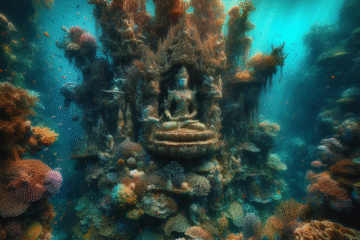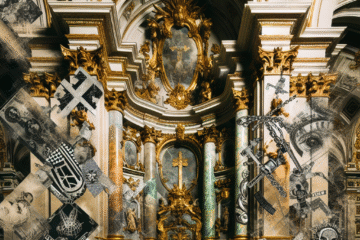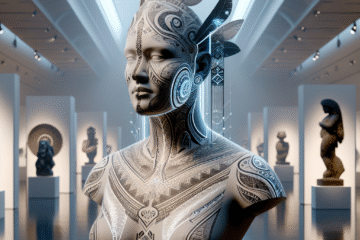Introduction: The Eternal Urge to Create
Art has always been a mirror of humanity’s inner world—a visual language through which societies record, question, and redefine their place in the cosmos. From the flickering linework on prehistoric cave walls to the infinite permutations of generative AI compositions, the story of visual art is inseparable from the story of human consciousness and technology. As we trace art’s trajectory through history, we uncover not only changing aesthetics but also shifting philosophies, innovations, and cultural revolutions.
I. The Dawn of Expression: Prehistoric and Ancient Art
Some of the earliest known artworks date back over 40,000 years, etched into the walls of caves in Lascaux, France, and Sulawesi, Indonesia. These Paleolithic paintings—depicting animals, human figures, and enigmatic symbols—were more than mere decoration. They served spiritual or ritual purposes, possibly communicating with unseen forces or commemorating hunts. Art, even in its infancy, was a tool of meaning and magic.
As civilizations emerged, art evolved into a key component of identity and power. In ancient Egypt, for example, hieroglyphs and tomb murals immortalized pharaohs and mythologies, forming a visual theology rooted in order and eternity. Meanwhile, Greek and Roman art pursued idealized beauty and proportion, laying the foundation for naturalistic representation and a philosophical meditation on form, harmony, and the human condition.
II. Sacred Symbols and Humanism: The Middle Ages to the Renaissance
During the Middle Ages, art in Europe largely functioned as a didactic extension of the Church, visually translating biblical narratives for largely illiterate populations. Iconography became codified, and luminous stained glass, illuminated manuscripts, and frescoes adorned Gothic cathedrals, guiding spiritual contemplation through grandeur and color.
The Renaissance marked a pivotal reawakening. Artists such as Leonardo da Vinci, Michelangelo, and Raphael combined classical knowledge with empirical observation. Humanism recentered art on the individual and earthly experience. The invention of linear perspective was not just a technical innovation—it signaled a conceptual shift toward rational space and the unique viewpoint of the observer. Art became both window and mirror, simultaneously revealing the world and the self.
III. Revolutions and Rejections: From the Baroque to Modernism
The following centuries saw art responding dynamically to social, political, and philosophical upheavals. The Baroque period, with its swirling drama and divine theatrics as seen in works by Caravaggio and Rubens, gave way to the more restrained Rococo, then the moral clarity of Neoclassicism, and later, the emotional depths of Romanticism.
By the 19th century, movements such as Realism and Impressionism emerged as rejections of academic conventions. Artists like Courbet, Monet, and Degas turned their gaze to daily life, ephemeral light, and subjective experience. Then came the avalanche of Modernism—Cubism deconstructed form, Expressionism laid bare emotion, and Surrealism dared to explore the unconscious. Art was no longer just an image—it became an idea.
IV. The Age of Concept: Postmodernism and the Digital Turn
Post-World War II saw visual art explode into myriad directions. Jackson Pollock’s action painting, Andy Warhol’s screen-printed celebrity icons, and conceptual provocations by Duchamp and Kosuth all expanded the definition of art itself. The ‘art object’ was increasingly questioned: Must art be beautiful, tangible, or even exist at all?
Meanwhile, the integration of photography, video, and eventually the internet began reshaping both production and consumption. The digital turn democratized art-making and birthed new media forms. In the late 20th century, artists like Nam June Paik and Bill Viola pioneered video art, while Damien Hirst and Tracey Emin embraced shock and spectacle. The gallery space had expanded to include both the screen and the sociopolitical arena.
V. Art in the Algorithmic Age: Generative AI and NFTs
Today, we stand at the threshold of one of the most radical transformations in the history of visual art: the era of AI-generated and blockchain-backed artwork. Generative algorithms, like those used in DALL·E or Midjourney, create images based on textual input. These tools challenge the notion of authorship and creativity: if a machine can ‘play artist’, what does it mean to conceive of a unique vision?
Simultaneously, the rise of Non-Fungible Tokens (NFTs) has redefined how art is owned, distributed, and valued. Artists such as Beeple and Pak have earned global headlines and astronomical sales, highlighting a shift toward digital scarcity and provenance. While controversial, these developments reflect a broader narrative—art as a reflection of our technological culture, ripe with both promise and peril.
Conclusion: Infinite Futures
From the primal marks on cave walls to the infinite possibilities emerging from neural networks, art continues to evolve in tandem with human progress. Each era leaves behind motifs and meanings, but also raises enduring questions: What is art for? Who is it for? And who or what gets to be called an ‘artist’? As we look forward, one truth remains constant—art is, and always will be, the trace of our desire to express, to know, and to connect.
Image description:
Evolution of the Bicycle with years.
License:
CC BY 3.0
Source:
Wikimedia Commons


